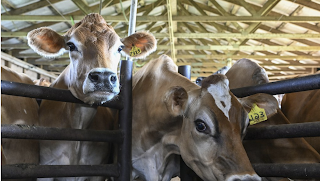David Sawyer, a Kentucky-grown back-to-the-lander who ran a student-service program at Berea College, helped start AmeriCorps and became an international consultant on the environment, civic engagement and a wide range of other topics, was remembered fondly Saturday as someone who changed people’s lives.
“He centered his life’s work on service, right livelihood,” longtime friend Peter Hille, president of the Mountain Association, said at a memorial service in Berea’s Union Church for Sawyer, who died Nov. 25 at his home in Portland, Oregon, at 71.
Hille said Sawyer took the beauty and suffering of life and “held them as if they were high-voltage cables, and with that current thrumming through him, he just glowed, didn’t he? David was incandescent, and he burned with the intensity of that truth.”
Hille and Sawyer, a Lexington native, met in the 1970s as neighbors, two of many who had moved to rural Kentucky to follow alternative lifestyles and try to live off the land.
 |
| David Hartwell Sawyer III |
“We were chosen to train 50 people to train the first participants of the AmeriCorps program,” his widow, Jennifer Sawyer, said at the service. “That to me is the thing that will live on about David the most. He changed people’s lives.”
And not just with AmeriCorps. Most of the 15 speakers at the service recalled times when Sawyer turned their lives around.
Professor and therapist Blake Jones of Midway, Ky., said Sawyer “believed in us when we couldn’t believe in ourselves,” always using their last names when he got serious about something they should do. Jones recalled this exchange:
“Jones, I want you to be the student director at SFA.”
“I’m sorry, David, I can’t do that.”
“Yes, you can.”
“No, I can’t.”
“Yes, you can, and you will.”
“David called himself a Buddhist Christian and I just assumed that’s just what they did; they just said stuff and just walked away. . . . So I became the student director," Jones told the crowd. “I needed unconditional love and I needed accountability, and he gave both those things to me.”
 |
| Lisa Perkins-Orta spoke at the service. (Photo from Zoom) |
“He saw in me something I never knew existed,” she said, recalling how she came to his home for an SFA staff retreat and “I started crying because of how it smelled. It smelled like my Mamaw’s house and I hadn’t been home for a long time.” Without asking her permission, Sawyer told the group the story: “Perkins came in here and just wept.”
“He just bared me in front of God and everybody,” Perkins said. “That moment gave me the life lesson that who I am and what I am experiencing is worth something. . . . That was the first time that I ever saw my tears as something strong. . . . I was a little girl from Webbville, Kentucky, who didn’t want to keep on being in Webbville, Kentucky. Because of his belief, I became who I am.”
After a decade at Berea, Sawyer facilitated other national leadership programs, a global conference on climate change, and spent four years working with the BP energy company, coaching senior leaders, designing the cultural dimension of its merger with Arco. He was executive-in-residence for Kansas City’s Kauffman Foundation, promoting citizen engagement and civic innovation; the first executive director of Social Venture Partners Portland, and chief culture officer for gDiapers, maker of the world's first flushable and compostable diaper. He co-founded Converge, a network of consultants who help form social-impact networks, and at his death was president of Context, a consultancy on strategy, leadership and culture. He worked in many fields, including sustainable agriculture, education reform, national service, social entrepreneurship, venture philanthropy, the emerging green economy, and multisector collaboration.


















